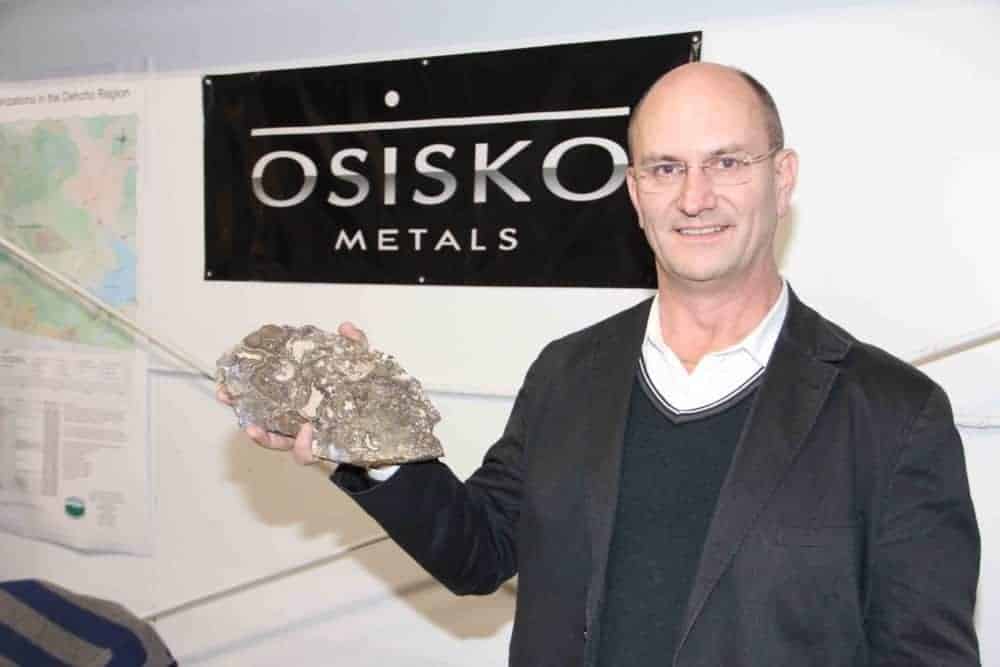While a mining conference was held last week in Hay River, everyone's thoughts were squarely on a site about 70 km to the east.

Paul Bickford/NNSL photo
That would be Pine Point, where Osisko Metals is exploring the viability of restarting a lead/zinc mining operation that closed in 1988.
Jeff Hussey, president and CEO of Osisko Metals which finalized the purchase of the property early this year, gave a highly detailed description of where the project stands right now, and what the future may hold.
"I think it was a great forum," said Hussey, after the symposium wrapped up. "And it's time for us to share our story now that we're within the first year. I welcome the opportunity. What I'm trying to do is to manage expectations. So I carefully say what I'm saying because there's still lots of things that have to fall into place."
Hussey said the good news is that Pine Point, as a former producing mine, already has significant infrastructure, including road access and available power, the metallurgy is excellent and there's still some exploration upside.
"Those are the three key variables that we looked at when we came here," he said.
However, Hussey was not ready to say when production might start.
The resource still has to be defined as sufficient for a mining operation, while the price of zinc has to be at the right level, community support has to be confirmed and mitigation of environmental concerns has to be considered.
That's not to mention obtaining government permits and project financing for development.
"So it's still very early days," said Hussey.
The exploration work is aimed towards a feasibility study in 2020, but Hussey said that could change.
This year, Osisko Metals did extensive drilling to confirm to modern standards how much lead and zinc was left over after Cominco closed its Pine Point operation.
"They shut down Pine Point and left 50 million tonnes at about five-six per cent lead plus zinc," Hussey said.
Osisko Metals also believes there may be more lead and zinc resources further down than Cominco drilled in its exploration efforts.
In his address to the symposium, Hussey noted the Pine Point mining operations shut down in the 1988 for a number of reasons, including the price of metal and the fact Cominco was opening a higher-grade zinc mine elsewhere.
Hussey said Cominco did good work exploring Pine Point.
"We're finding that we'll be able to use Cominco's data and incorporate that into our mineral resource estimate," he said. "We hope to get a mineral resource estimate from the drilling we did this year out by the end of the year."
Hussey also gave the symposium a perspective on the ups and downs of zinc supply and pricing.
"We're still in an environment where zinc fundamentals will be good going forward, and that's the place you want to be," he said.
Plus, Hussey noted that many zinc mines have shut down.
"There has been very little exploration and development going on," he said. "So there are not many mining projects to feed that demand."
This year, Osisko Metals drilled about 600 holes at Pine Point for a total of over 50,000 metres.
"We're looking at completing the drilling hopefully in 2019 and then we would have the resource base to go towards a feasibility study," said Hussey. "But first we have to do our homework – drilling, environmental baseline work, engaging with the communities for the last year or more."
In reply to a question from former KFN chief Roy Fabian about when a mine might be open, Hussey said the main variable is price.
"It's looking good, but we have to see next year what happens," he said.
Hussey noted that, if Pine Point does return to production, it could create 100-150 jobs.
"This is not an Ekati Diamond Mine. This is like a tenth of that or smaller. This is not the huge, huge project that the North has seen from other ventures," he said, although he added it would be a good project.
Construction would mean up to 300 jobs for a year or two.
In his address to the symposium, Fabian noted that, while the Pine Point site is not on KFN traditional land, the highway connection is on KFN traditional land.
Fabian said KFN did not benefit from the previous mining operation at Pine Point.
"So we want to change that," he said. "We said we want to have a mining symposium to take a look at all the services that are going to be delivered for the Pine Point mines. And because transportation is all going to happen on KFN traditional territory, we need to take a look at that… and say how we want to participate."
Industry, Tourism and Investment (ITI) Minister Wally Schumann also attended the mining symposium.
"This event is a good example of how Indigenous and public governments can work together towards a strong economy that benefits everyone," Schumann said. "As the Pine Point project continues to move forward, the communities in this region are preparing for the direct and indirect opportunities that will come."
The minister noted that commodity prices are in flux right now, but it is still believed that reviving Pine Point is a viable project.
"They know this is a great project," he said. "So they want to keep the push on."
Schumann said he loves the project.
"It's exciting for me because it's in our region," he said. "It's in the South Slave and it gives us an opportunity to participate in a meaningful way where some of us don't get an opportunity north of the lake."
The KFN Mining Symposium was presented in a partnership between the First Nation and ITI.